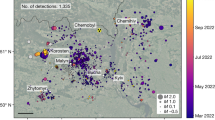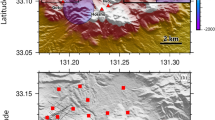Abstract
Seismological means for detecting and identifying underground nuclear explosions have improved steadily during the past ten years. A technique exists for separating explosions from earthquakes. The problem now is lowering the threshold and understanding the occasional problematic event.
This is a preview of subscription content, access via your institution
Access options
Subscribe to this journal
Receive 51 print issues and online access
$199.00 per year
only $3.90 per issue
Buy this article
- Purchase on SpringerLink
- Instant access to full article PDF
Prices may be subject to local taxes which are calculated during checkout
Similar content being viewed by others
References
Neild, R., and Ruina, J. P., Science, 175, 140 (1972).
The Detection and Recognition of Underground Explosions (United Kingdom Atomic Energy Authority, London, 1965).
Marshall, P. D., and Basham, P. W., Geophys.J., 28, 431 (1972).
Proceedings of a Conference on Seismic Discrimination at Woods Hole, Massachusetts (July 20–23, 1970).
Seismic Methods for Monitoring Underground Explosions (Progress Report, SIPRI, Stockholm, 1971).
Basham, P. W., and Whitham, K., Seismological Detection and Identification of Underground Nuclear Explosions (publication of the Earth Physics Branch, Ottawa, Canada, 1971).
Submission of the United Kingdom to the Geneva Conference on Disarmament, July 28, 1970 (CCD 296).
Author information
Authors and Affiliations
Rights and permissions
About this article
Cite this article
DAVIES, D. Monitoring Underground Explosions. Nature 241, 19–24 (1973). https://doi.org/10.1038/241019a0
Issue Date:
DOI: https://doi.org/10.1038/241019a0



